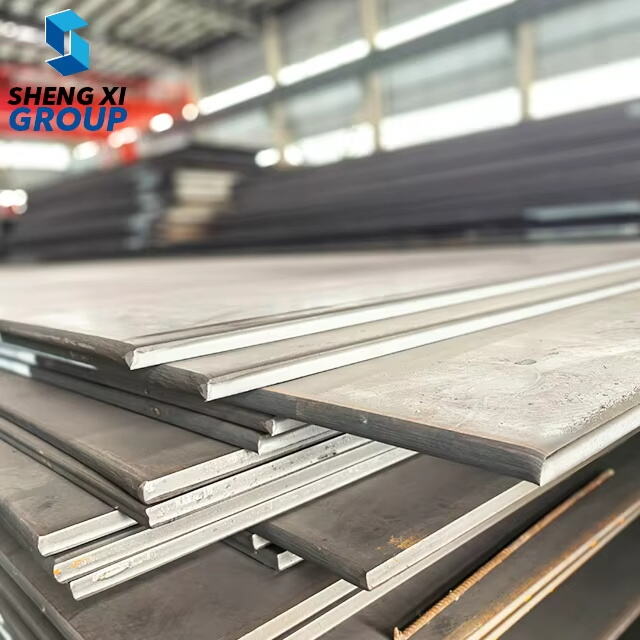Understanding Cold Rolling's Role in Steel Quality
Cold rolling stands out as a manufacturing technique where steel gets compressed between rollers at normal temperatures rather than being heated first. When compared to hot rolling processes that work with extremely hot metal, cold rolling actually improves how the steel grains align and creates a smoother surface since there's no recrystallization happening during compression. The advantages are pretty clear too many factories prefer this approach because it delivers better surface finishes and much tighter dimensions. For parts needing exact measurements or smooth surfaces like automotive components or precision tools, cold rolling becomes the go to method in most workshops across the industry.
The process of cold rolling helps prevent oxidation that typically happens when steel gets exposed to air during hot working, resulting in a much cleaner finish on the metal surface. One major benefit comes from strain hardening, an important part of cold rolling that makes steel stronger and tougher through work hardening effects. This matters a lot in applications where materials face constant stress or heavy loads. Standards organizations such as ASTM A108 and A53 actually set specific requirements for cold rolled products, which means manufacturers can count on consistent quality across different batches. For anyone involved in structural engineering or fabrication work, these standardized specifications make all the difference in day to day operations.
Effects on Steel Microstructure and Integrity
The cold rolling process really changes how steel's microscopic structure looks, which ultimately makes it stronger overall. When manufacturers refine those tiny grains inside the metal during cold rolling, they basically get rid of flaws while boosting both yield and tensile strength numbers. Industry tests actually show that cold rolled steel stands out when it comes to strength metrics. Take yield strength for example it typically goes up around 20% after processing. What makes this technique so valuable is that it fine tunes those grain structures, meaning the steel won't bend or break as easily when put under pressure. Products made from such treated steel simply last longer in service before needing replacement or repair.
Insights from metallurgical research support these improvements, pointing to cold rolling's vital role in producing high-quality steel with increased integrity. Enhanced mechanical properties and the ability to remove imperfections make cold rolling a favored technique for industries focusing on structural applications.
Critical Process Parameters for Quality Enhancement
The amount we reduce thickness and apply pressure during cold rolling makes all the difference in what kind of steel we end up with. When talking about reduction ratios, basically we're looking at how much thinner the metal gets as it goes through the rollers. This directly affects things like hardness and flexibility in the finished product. If manufacturers push for higher reduction rates, they generally get stronger steel that holds up better under stress in factories and construction sites. What about those roller pressures? They matter too because getting them right means smoother operation of the machinery and fewer defects in the final sheets. Steel plants spend a lot of time fine tuning these parameters since even small changes can lead to big differences in performance down the line when the material is put to work.
Changing roller pressure affects how smooth and even the steel ends up looking, which matters a lot when making parts that need tight tolerances. For cold rolling operations, most shops find good results when they set up with medium gear ratios and apply just enough pressure so the metal doesn't crack but still gets worked properly. Different types of steel react differently though. A carbon steel sheet might handle higher pressures better than stainless alloy grades. That's why experienced operators often tweak their machines based on what kind of material they're running through the mill at any given time. Getting this right makes all the difference between scrap metal and quality finished products.
Temperature Control During Rolling Stages
Keeping temperatures stable during cold rolling is essential for preventing defects and getting good steel quality out of the process. When the metal stays at consistent temps throughout rolling, it maintains its internal structure better, which means fewer warps and those annoying surface flaws that show up otherwise. Steel mills know this all too well because temperature swings mess with the metal's characteristics. We've seen cases where even small changes result in weaker tensile strength and products that don't hold up as long as they should. That's why most modern facilities invest heavily in temperature control systems for their rolling lines.
Keeping temperatures just right during the rolling process makes a big difference in final product quality. When the heat stays consistent across all stages, it actually cuts down on internal stresses within the steel itself. This means stronger materials overall with fewer defects. These days, factories rely heavily on things like high precision thermal sensors and computer controlled systems to keep those temperatures stable while manufacturing runs. The ability to tweak conditions instantly has become standard practice, and honestly, this approach delivers much better results than older methods ever could for most steel producers out there.

Surface and Dimensional Improvements Through Cold Rolling
Getting good surface finishes and flatness right in cold rolled steel really matters when it comes to what happens next with the material. When surfaces are high quality, there's just less junk mixed in and they don't rust or wear down so easily. That makes all the difference for things like car parts, building materials, even stuff we use around the house daily. The way manufacturers handle things during production counts a lot too. Proper lubrication between rollers and how those rollers themselves are designed can mean the difference between consistent quality across batches or having problems later on down the line when products start failing prematurely.
Manufacturers use specialized rollers to minimize surface roughness and enhance flatness during the cold rolling process, resulting in superior steel surfaces less prone to defects.
Precision Thickness Control Techniques
Getting the right thickness during cold rolling makes all the difference when it comes to how well products perform and stay consistent across batches. For things where even small variations matter a lot, such as parts used in airplanes or tiny electronics, precise measurements become absolutely necessary. Manufacturers typically rely on tools ranging from good old fashioned calipers to fancy laser systems these days to check and tweak the metal's thickness down to fractions of a millimeter. When they stick closely to those specifications, what comes out at the end works better and lasts longer without failures popping up unexpectedly.
Challenges such as equipment calibration and material consistency can affect thickness control. Modern steel production has implemented solutions like real-time monitoring and automated adjustments to meet these challenges, ensuring the production of high-quality, precise cold-rolled steel products.
Post-Rolling Treatments for Enhanced Properties
Annealing plays a key role in bringing back ductility to cold rolled steel so it can be shaped again for different uses. The process basically heats up the metal to certain temperatures then lets it cool down slowly over time. This helps get rid of those built up stresses inside the material and makes it more flexible overall. When manufacturers cold roll steel, they do manage to make it thinner and give it a better surface finish, but there's usually a trade off. The resulting steel tends to become quite hard and prone to breaking under stress unless properly treated through annealing first.
Annealing counters this by enhancing toughness and making the steel more adaptable to bending and shaping. Batch annealing allows the steel coils to heat slowly over time, leading to uniform ductility, whereas continuous annealing rapidly heats the steel through a furnace, suitable for high-throughput environments.
Implementing effective annealing processes demands adherence to industry best practices to maximize quality and efficiency. This includes maintaining precise temperature controls and understanding the specific needs of the steel grade being treated.
Quality Assurance in Cold Rolled Steel Production
Non-destructive testing (NDT) plays a pivotal role in ensuring the quality of cold-rolled steel. It involves methods that assess the properties and integrity of steel without causing damage, ensuring materials meet stringent quality standards. Common NDT methods include ultrasonic testing and magnetic particle inspection.
Adding proper inspection protocols to the production line stops defects before they become problems while keeping things up to standard quality requirements. When manufacturers spot issues early on during inspections, it saves money on fixing mistakes later and makes sure those steel parts work reliably across different industries. Non-destructive testing tech has come a long way recently. Newer methods like ultrasonic testing and magnetic particle inspection give better results faster than older techniques did. Steel plants that upgrade their inspection systems typically see fewer rejects and happier customers down the road.
FAQs
What is the difference between cold rolling and hot rolling?
Cold rolling occurs at room temperature, refining steel's grain structure and surface finish without recrystallization, while hot rolling involves processing at high temperatures, typically resulting in a rough surface finish.
Why is temperature control important during cold rolling?
Maintaining consistent temperature is vital to prevent material defects and optimize steel quality, ensuring improved mechanical integrity and reducing stress on the steel.
How does annealing affect cold-rolled steel?
Annealing restores ductility and adaptability, enhancing toughness and formability after cold rolling, which often leaves the steel hard and brittle.
What role does non-destructive testing play in cold-rolled steel production?
Non-destructive testing assesses the integrity and quality of steel without causing damage, ensuring compliance with rigorous industry standards.
Table of Contents
-
Understanding Cold Rolling's Role in Steel Quality
- Effects on Steel Microstructure and Integrity
- Critical Process Parameters for Quality Enhancement
- Temperature Control During Rolling Stages
- Surface and Dimensional Improvements Through Cold Rolling
- Precision Thickness Control Techniques
- Post-Rolling Treatments for Enhanced Properties
- Quality Assurance in Cold Rolled Steel Production
- FAQs


